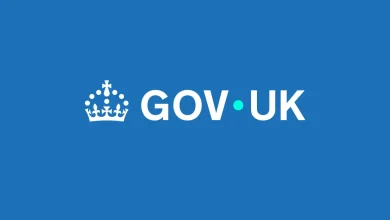James Norton is Thriving With Type 1 Diabetes, On and Off Screen

This past month James Norton has graced our screens as the charismatic foreman Sean Rafferty in House of Guinness, the new Netflix drama set amid Ireland’s brewing heritage.
Rugged, warm and quietly commanding, James once again shows why he’s one of Britain’s most compelling actors. But off-screen, he’s playing an even more meaningful role – as an advocate for people living with Type 1 diabetes, a condition he’s managed since his early twenties.
That’s why he is our positive icon for this month, combining diabetes advocacy with being a positive male role model.
Living With Type 1: The Reality Behind the Roles
James Norton has spoken candidly about the daily grind of life with Type 1 diabetes – from countless blood-sugar checks to as many as 15 insulin injections a day.
He’s described the fear of night-time hypos and the constant calculations that come with balancing food, stress and exercise. It’s hardly glamorous, yet that honesty is exactly why his voice resonates – and why we chose him as our positive icon for November.
He’s even shared how filming days sometimes mean pausing to grab glucose tablets or check his monitor – proof that chronic illness doesn’t stop ambition. His openness strips away the stigma and shows the reality behind the red carpets.
Turning Awareness Into Action
Talking is one thing – but Norton takes action too. He’s supported Breakthrough T1D UK (formerly JDRF UK) and fronted social-media drives like #T1DLooksLikeMe, showing that diabetes doesn’t have a single “look”.
During lockdown he even took over JDRF’s Instagram for a live Q&A, chatting openly about management, tech and mental health. It’s advocacy rooted in empathy, not ego — and it’s helping others feel seen.
Not only this, but he joined the roster of celebs that have delivered a CBeebies Bedtime Story reading ‘How to Manage a Mammoth’ by Dr Rose Stewart, which helps children understand diabetes better.
Redefining strength and visibility
What sets James apart is the tone of his message. He once called diabetes his “mini-superpower” – not because it’s easy, but because it’s taught him resilience and empathy.
He credits it with deepening his emotional range as an actor and keeping him grounded when the industry gets noisy.
In an era obsessed with perfection, his willingness to show the messy, human side of health is refreshing. The alarms that jolt him awake, the glucose tabs tucked into costume pockets — these unfiltered details make him relatable and quietly heroic.
A broader compassion for causes that matter
James’ compassion doesn’t stop at health advocacy or being a role model for other men.
He’s helped raise over £18,000 for St Leonard’s Hospice in York, supporting end-of-life care.
He’s also championed marine conservation, completing a gruelling ten-hour sea swim for the Blue Marine Foundation, and he serves as an ambassador for Tempus Novo, a charity helping ex-offenders rebuild their lives through work and mentorship.
Whether he’s raising awareness, money or hope, James Norton proves that influence means more when it’s used for others.
So while House of Guinness shows him commanding the factory floor, off-screen he’s leading by quieter, more powerful example – one grounded in courage, compassion and real-world impact.
Charity check-in
At Smiley Movement, we elevate the work of charities across the world. Here are three charities whose causes align with the themes in this post.
Breakthrough T1D. This charity funds international research to prevent, cure and treat Type 1 diabetes. They also campaign for better treatments and care for those with the disease. Find out more.
Diabetes UK. A UK social enterprise that mobilises volunteers to support local community projects, combining social impact with real-world connection. Learn more.
Royal Voluntary Service. For more than 85 years, this charity has been inspiring Britain to volunteer and contribute to their community. Explore their work.
This article aligns with the SDG Good Health and Wellbeing, Quality Education, Reduced Inequalities, Partnerships for the Goals.





